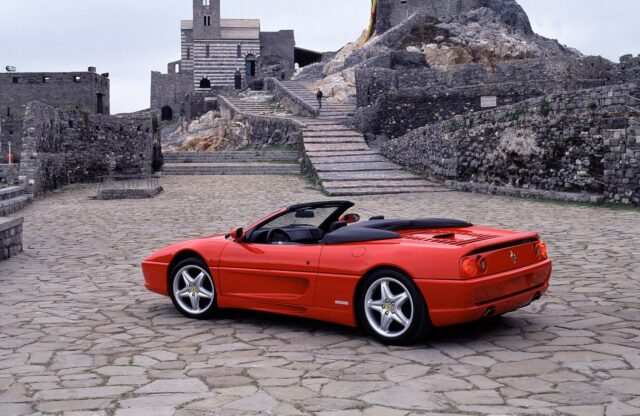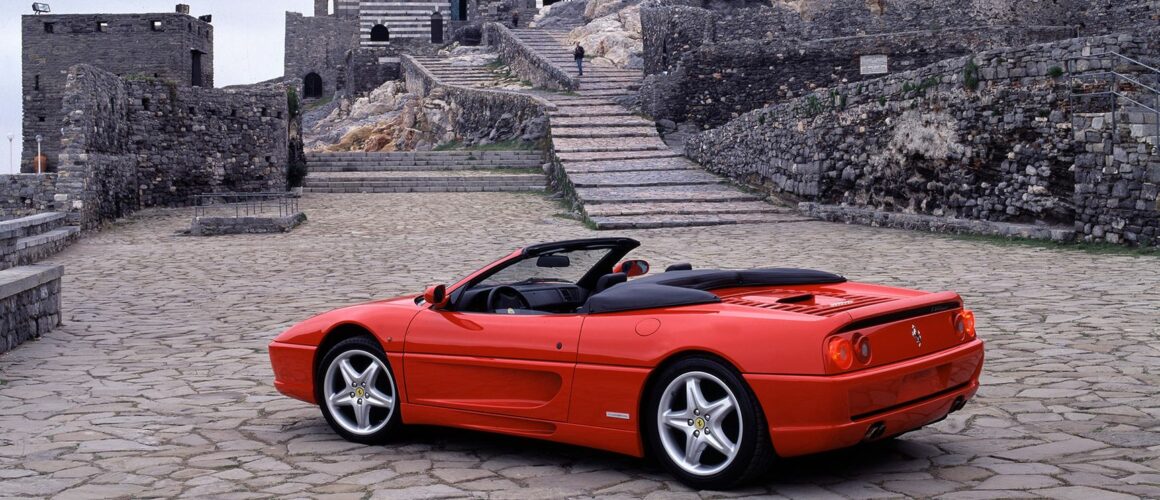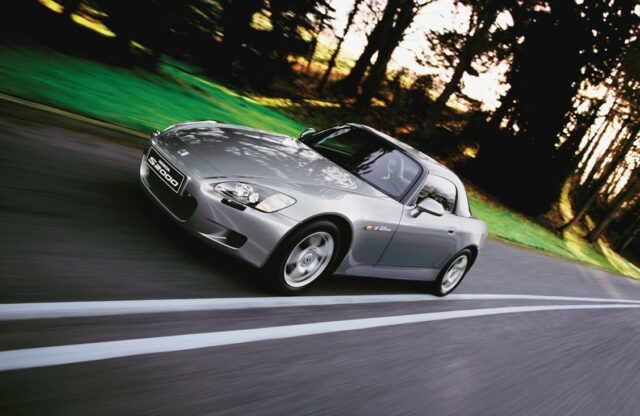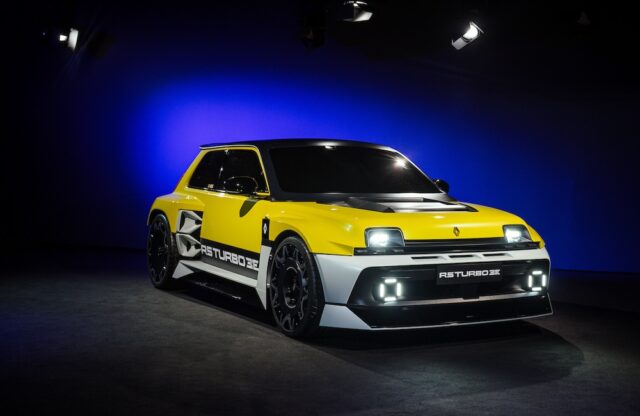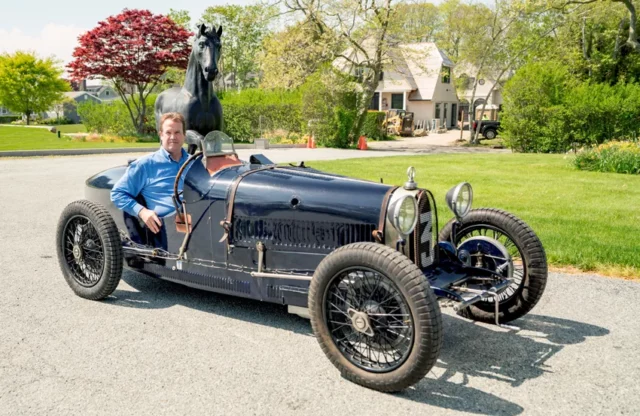When Ferrari’s F355 burst onto the scene in 1994, it felt as though Maranello was reborn. The 348 isn’t a bad car – certainly not as much as some would have you believe – but the F355 was a massive step forwards in performance and, critically, usability.
Ferrari hadn’t gone soft on us, though; the F355 used a revised flat-plane-crank 3.5-litre V8, now developing 375bhp thanks in part to new five-valve cylinder heads. It performed and sounded like no other V8 Ferrari had created before. The F355 debuted for the 1995 model year in Berlinetta and Targa form, with the convertible Spider following a year later. A six-speed manual was all that was offered at first, but in 1997 a Formula 1-style paddle-shift semi-automatic gearbox became available.
The improvements in both driveability and overall reliability mean the F355 is now regarded as the first of the modern mid-engined V8 Ferraris. Even 30 years on, it can be used regularly without owners fearing being left stranded by the side of the road in a cloud of expensive smoke. However, F355s need regular love from specialists, and indifferently treated cars can soon garner huge bills.
“It’s a great-handling machine,” says Martin Chatfield of Emblem Sportscars, but for him the F355’s appeal is all about the looks: “With buttresses and everything else, it is pure, classic Ferrari design, harking back to the 308 and 328.”
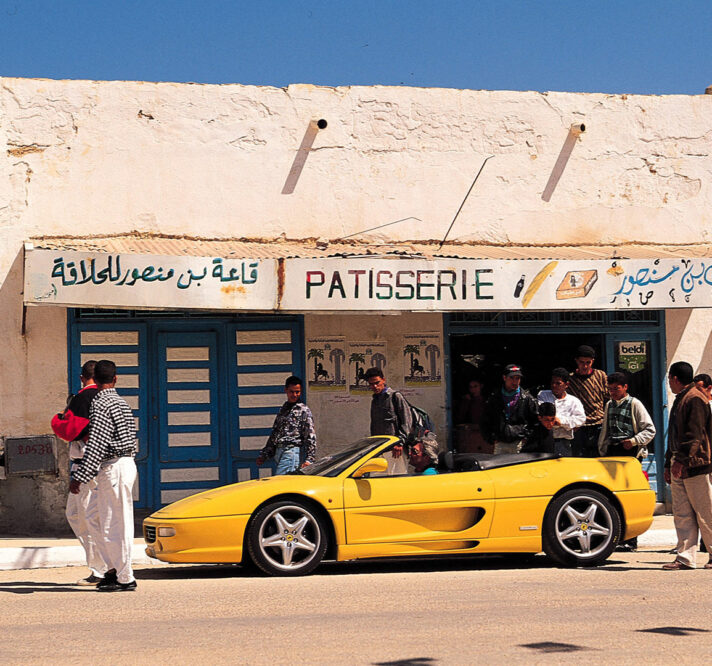
The F355 was a massive step forwards in performance and, critically, usability
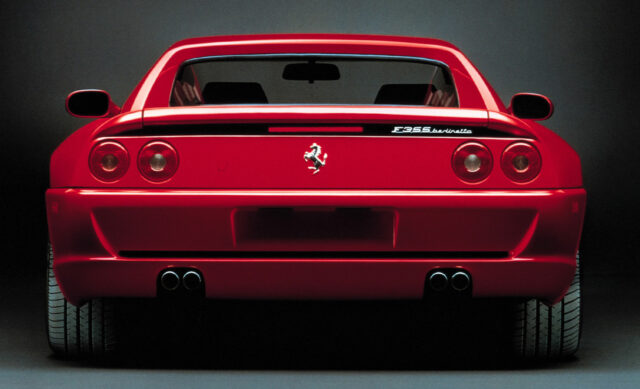
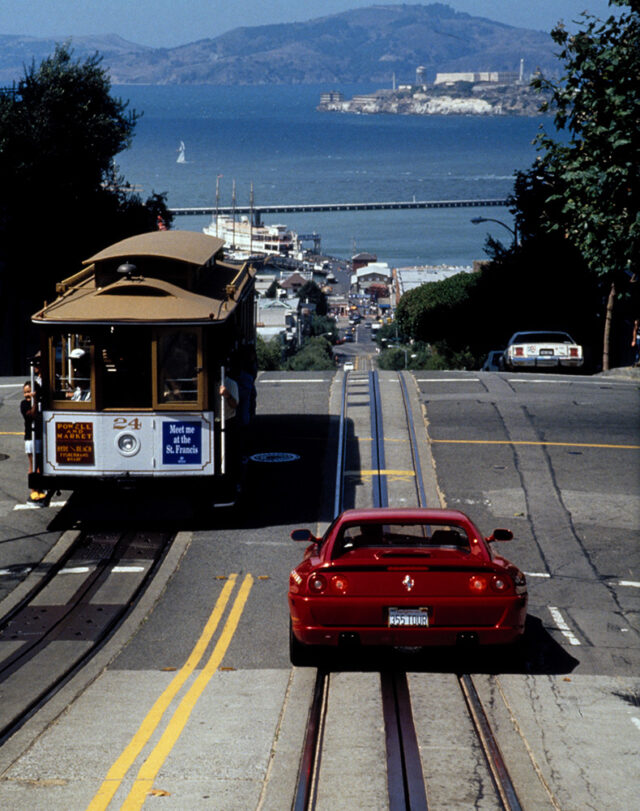
ENGINE AND GEARBOX
Despite its large power output and high-revving nature, the F355’s 3.5-litre V8 has proven to be robust. It’s not an easy car to work on, however, because a cambelt replacement requires the engine to come out, although some specialists remove the fuel tank to gain access. “We only do it the correct way – with the engine and the gearbox out – because that’s the way Ferrari designed it to be done,” says Martin. Cambelts last three years or 30,000 miles, whichever comes first, so factor this cost into any purchase.
You’ll find that the exhaust manifolds have already cracked – or they will do at some point. While they can be repaired, aftermarket units are available. Exhaust-bypass valves are known to wear out over time. This shows up as a rattle at idle, but replacements are pricey, and because they do not detrimentally affect the performance, some owners live with it.
In 1996 the ECU was upgraded from Motronic 2.7 to 5.2. Some specialists say the earlier cars produced slightly more power, but this should not dissuade you from considering later models, because the differences are minimal. Pre-1999 cars were recalled as a prevention against fuel-pipe manifold leaks. Martin again: “The fuel pipes are braided stainless steel, but the end of the fuel line can crack because it’s aluminium.”
The six-speed manual gearbox is robust, although rattling from the transmission is likely to necessitate the fitment of a new gearlever-housing bush. The F1 ’box is similarly strong, but clutches don’t last quite as long if the car does a lot of city miles. Their life can be improved by double-declutching when the engine is cold, and never leaving the car in gear when waiting at traffic lights.
“Both gearboxes use a hydraulically operated clutch,” Martin explains. “This and fluid leaks are the big problems. F1 transmission clutch life depends on use, and varies between 15k and 30k miles. A manual clutch will last around 30k miles.”

SUSPENSION AND BRAKES
Martin says the suspension is pretty robust. However, the adaptive-damping system can fail – look out for a dashboard warning light telling you there’s something wrong, which is usually down to a failure in the gears or motors. Replacements are relatively easy to source, but any leaks from the dampers will mean a full replacement at a cost of around £1200 each. Broken springs are common, and the handbrake cable is known to seize.
“Brakes can be left a bit wanting if used spiritedly on track or in, say, the Alps – especially compared with more modern Ferraris,” Martin says. “The magnesium wheels suffer from corrosion – they’re expensive to treat and re-finish.”
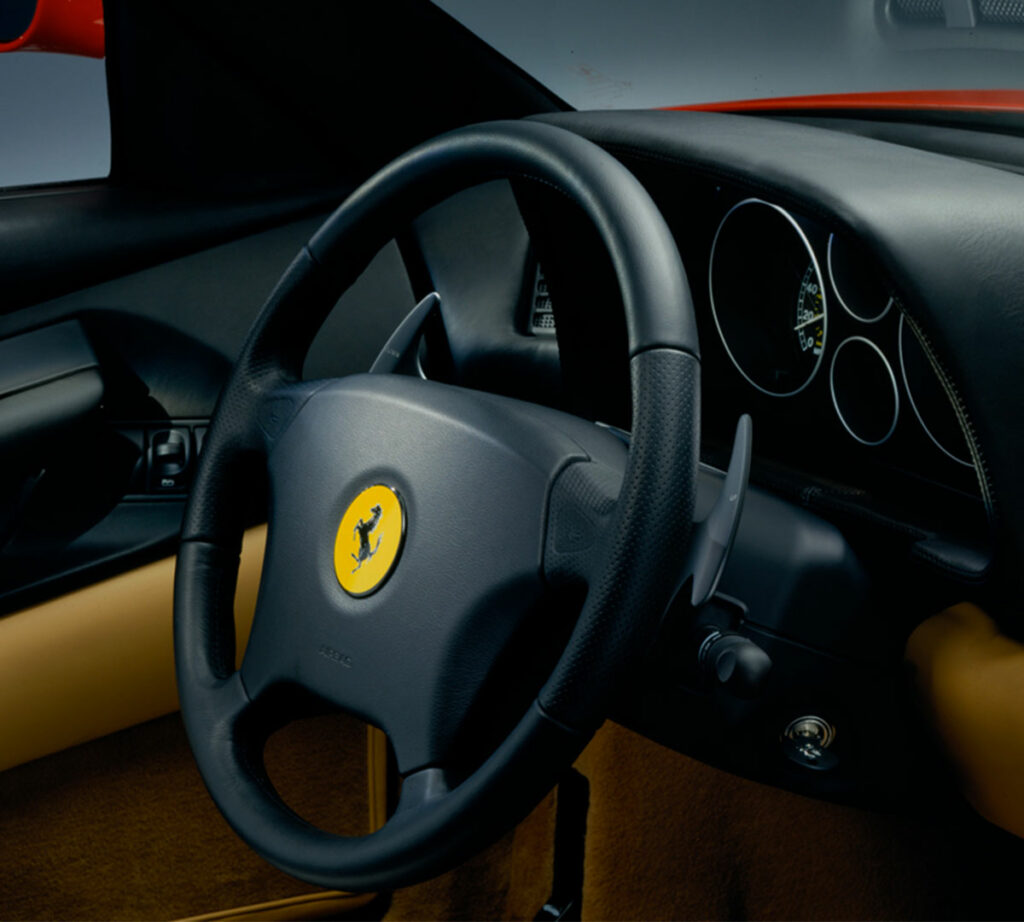
BODYWORK AND INTERIOR
The steel rear cradle holding the engine is a favourite place for corrosion to creep in – shine a torch down around the engine bay to see whether rot has taken hold. On Berlinettas and Targas, the rear buttresses tend to corrode over time, and bubbling paint is a sure sign that a repair is on the cards. This issue tends to resurface, so check if and when work was last carried out – specialists say it’ll need looking at every five years or so, depending on use. Martin reckons the GTS is more at risk, because it flexes a bit more than the GTB. Sill plates tend to corrode on all but the most pampered cars. Both factory and aftermarket items are readily available.
Inside, the dashboard and seat leather can suffer from shrinkage when exposed to the sun for extended periods. Sadly, not much other than a full retrim can be done to rectify this. The centre console has a plastic covering that tends to get sticky with age. The best solution is to peel off this layer, because replacement parts from Ferrari are prohibitively expensive. “A few specialists can recondition the plastics, but if you have to get the entire interior done, it could cost £3000,” Martin says.
The Spider’s electrically operated roof is a complex unit, and hydraulic-pump failure is a known issue and costly to sort out. Seat potentiometer issues are more common, but thankfully less pricey to fix. The potentiometers usually detect when the seats have moved forward, but will stop the roof from going up if they are faulty.
“The hydraulic rams in the roof can leak and refuse to work,” explains Martin, adding that you should budget £1000-£1500 for a replacement set. “The roof canvas itself is becoming a problem, and rear plastic screens are turning brittle – finding replacements is tricky.”

WHICH FERRARI F355 TO BUY
The F355 represents a stunning return to form for Ferrari, but it also marks the end of the Fioravanti styling theme going back to the 308 – the 360 was an entirely clean-sheet design. As such, the F355 is a high point in Ferrari’s line of mid-engined V8s – one look at its gorgeous profile, and hearing its evocative exhaust note, make arguing otherwise very difficult.
Given the emotive pull, it’s best to go into any F355 purchase with a clear head and a specialist inspection in your back pocket – the cheapest F355 could very well end up being the most expensive when trying to fix everything.
Manual Berlinettas are the most sought-after models, and as a result they command elevated prices over the F1-gearbox cars. “I’d go for a later 5.2 Motronic ECU car with a manual, in either Berlinetta or Targa form,” advises Martin. “There are fewer issues, and the manual ’box makes any drive more of an occasion.”
Getting behind the wheel of any well maintained F355 should be an absolute joy. With well balanced handling and spine-tingling performance… it all comes together to offer a uniquely analogue and immersive driving experience.

WHAT TO PAY IN UK/US
1995 – Berlinetta: Fair: £50,100/$115,000 Good: £62,700/$150,000 Excellent: £73,300/$202,000 Concours: £93,200/$302,000
1995 – Spider: Fair: £54,700/$76,200 Good: £65,800/$106,000 Excellent: £78,600/$152,000 Concours: £105,000/$217,000
1995 – GTS: Fair: £52,600/$131,000 Good: £63,800/$174,000 Excellent: £75,500/$218,000 Concours: £98,900/$327,000
Prices sourced April 2024 via Hagerty’s Price Guide. Special-edition models will cost more.
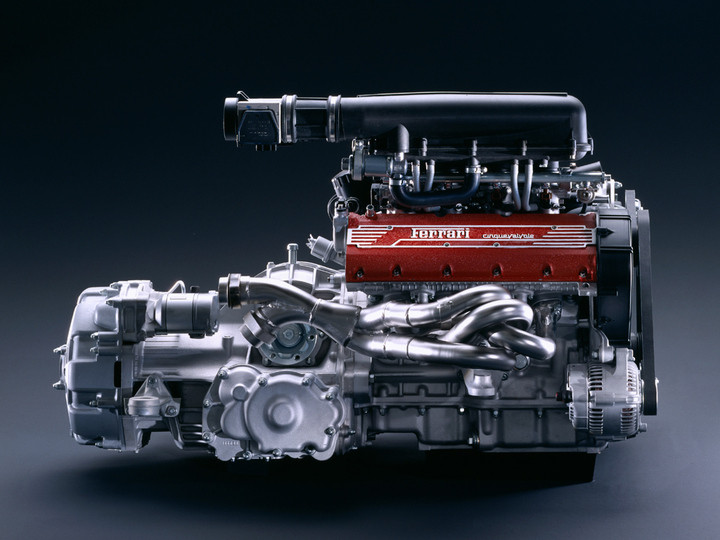
SPECIFICATIONS
Engine: 3.5-litre V8
Power: 375bhp
Top speed: 183mph
0-60mph: 4.6 secs
Economy: 20mpg (est.)
